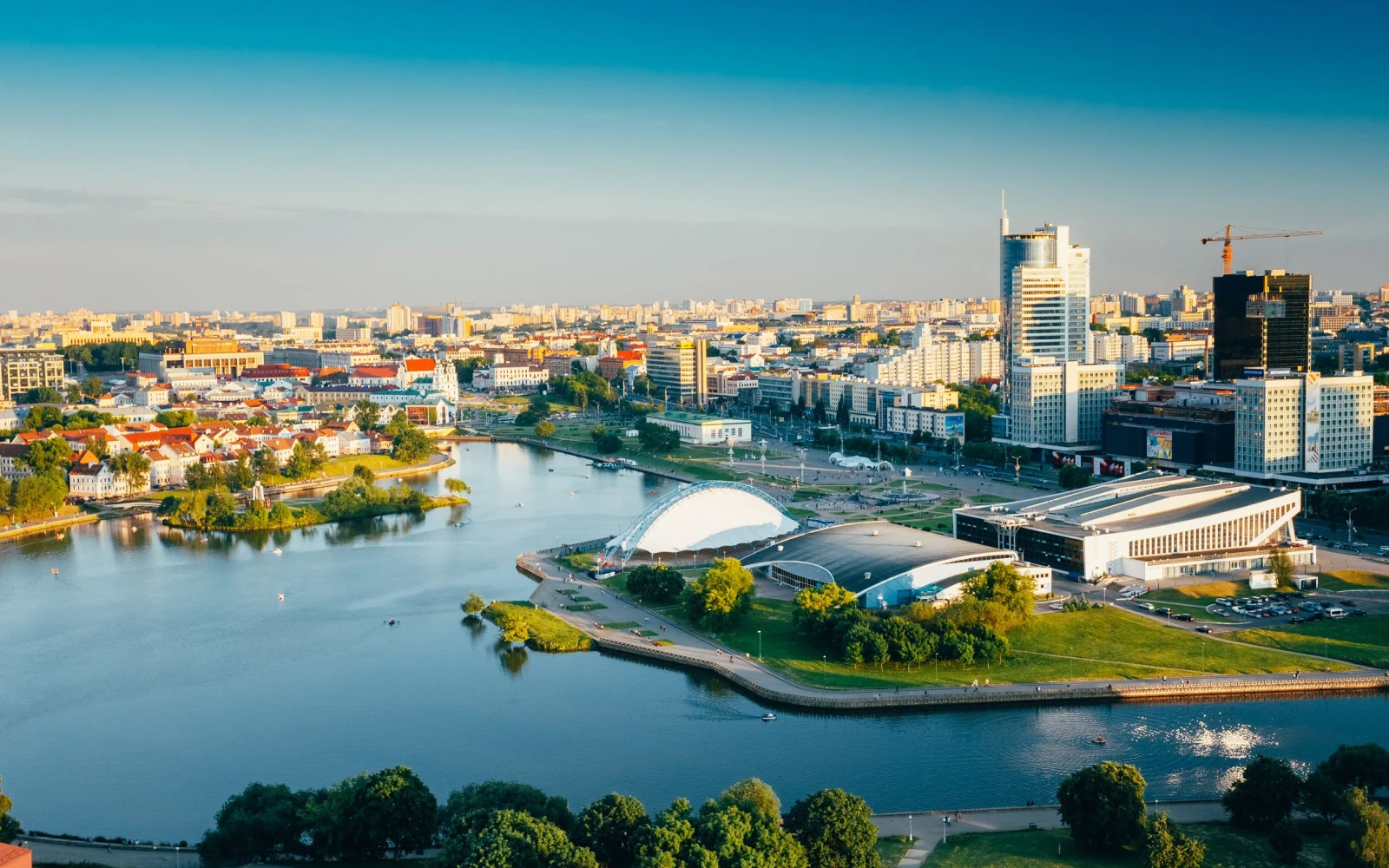Belarus is perfectly positioned to blend the best of European and Slavic culture to create a country that’s unique, inviting and memorable. Located just to the east of Poland, north of Ukraine, and east of Russia, the Independent Republic of Belarus has worked hard to craft its unique cultural identity over the years.
The country has even earned the nickname “The Lungs of Europe” due to its especially healthy air and abundance of trees in about half of the countryside, which is more appealing than other more dense, polluted European countries and larger cities.
But where should you stay when you visit? Don’t worry — you’re in the right place. Read on to learn about the best places to stay in Belarus, including why we love each area. Let us be your guide!
The Best Places to Stay in Belarus
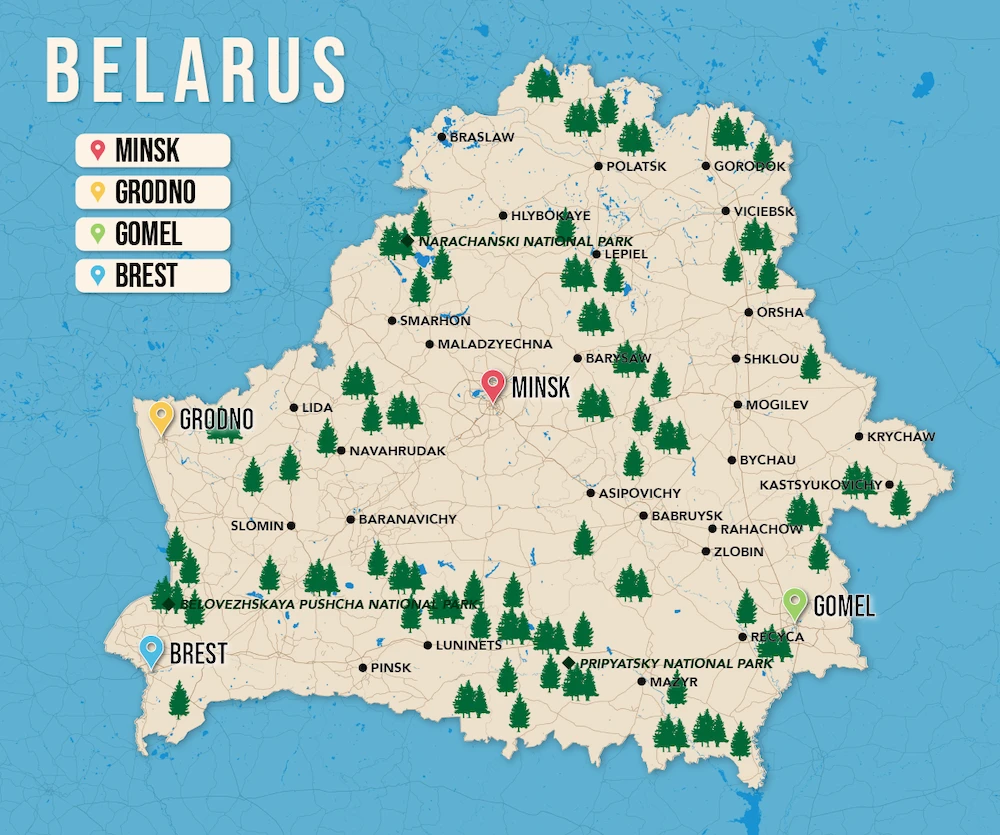
This culture-rich destination is considered the largest landlocked country in Europe and is roughly the size of Great Britain or the U.S. state of Kansas.
But Belarus is quite large, there are also many great places to stay. Our favorite areas include:
- Minsk. The capital and largest city includes legendary nightlife, sporting venues, and places of learning.
- Grodno. There’s plenty of history here, including ornate castles and Orthodox churches.
- Gomel. This area has industrial roots as well as distinct parks and impressive architecture.
- Brest. Visitors will experience lush forests, a beautiful city, and a national park jointly managed by adjacent Poland.
Where to Stay in Belarus: Best Areas & Hotels
The larger cities are especially worth visiting, since you’re more likely to find a wider variety of lodging options, which range from independently-owned accommodations, to chain hotels to homes and buildings that have been renovated into bed and breakfasts or inns.
City-based homes and apartments also may provide closer access to tourist activities and attractions. This compares to more rural areas where lodging may be more random and primitive.
There are also reports of contaminated food sources, soil, or groundwater in outlying parts of the countryside due to radiation from the Chernobyl nuclear reactor disaster.
Each area of the country is also unique in its cultural and religious influences, which could be interesting for those wanting to explore the area, search for their heritage, or want to absorb local traditions.
Like many modern European tourists, Belarus wasn’t on my radar, but when I passed through a few years ago, I was amazed at its architecture, cleanliness, and hospitality, especially in the Minsk area.
It’s an interesting juxtaposition – just as travelers are learning more about this amazing country, they are learning about us.
1. Minsk
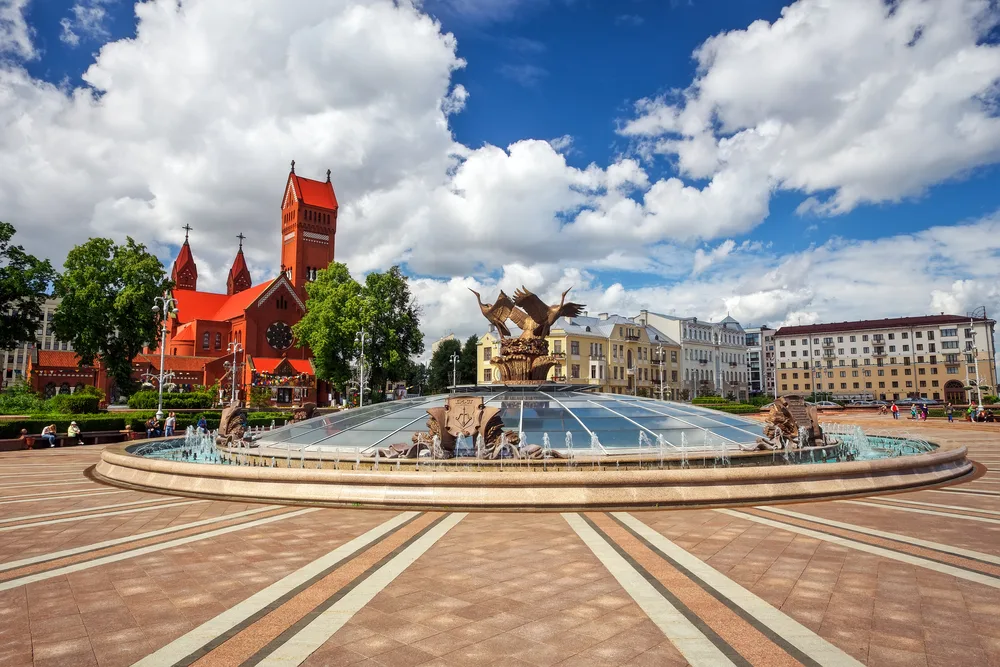
ESOlex/Shutterstock
Nearly 2 million residents live here and participate in everything from fitness to leisure. It’s been awarded the title of one of the world’s most clean cities in 2018, ranking just behind Tokyo and Singapore.
It’s definitely the cultural, municipal and financial hub of the country, with government offices for Belarus and the Minsk government district, as well as the headquarters of the National Bank of the Republic of Belarus.
The scenic Svislach River flows through the city, bringing a sense of natural wonder to the surroundings.
Though the city has been around in some form for the last 1,000 years, it was heavily damaged in World War II, followed by a period of Nazi occupation and then being placed into the USSR. Substantial efforts have taken place to rebuild in the last 30 years.
2. Grodno
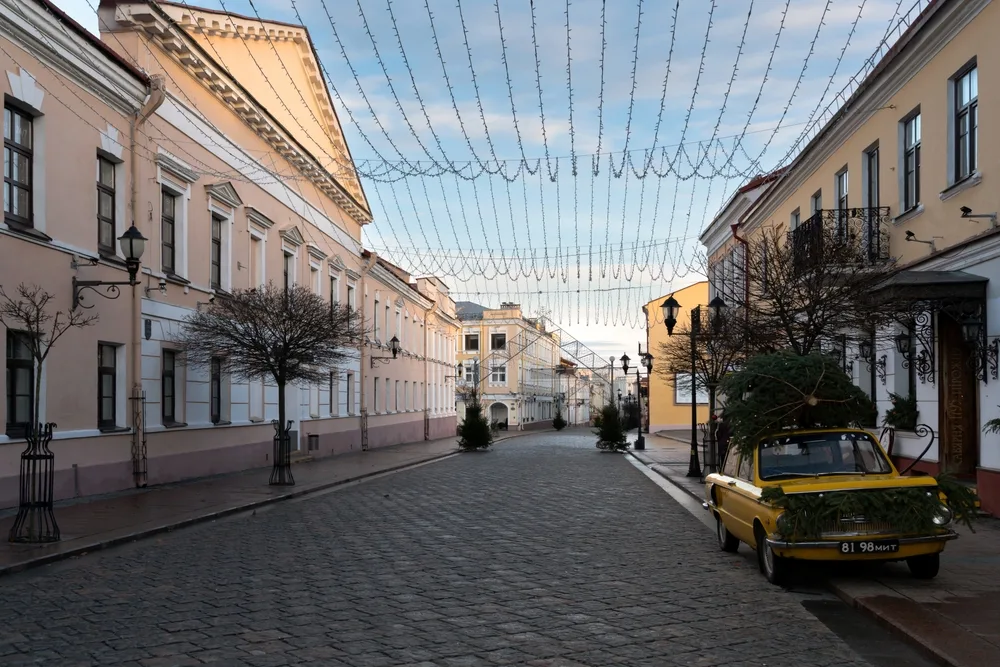
Grodno, Belarus, 01.03.2023: View of the main tourist pedestrian street of the historical center of the city Sovetskaya Street in New Year’s decoration/Ula Ulachka/Shutterstock
Grodno is a favorite Belarus border town with close ties to neighboring Poland and Lithuania. Over the centuries, it has been part of both of these countries as well as Ukraine, as maps and territories changed.
It first attracted notice in the 12th century as a small fortress and trading post on the Gorodyna River, and was occasionally sacked or passed through by everyone from the Turks and French to the Crusaders to the Nazis.
It has a history as a place of industry as well as learning, having a distinguished medical school and home to Yanka Kapala State University. Visitors enjoy seeing the range of architectural styles in the buildings, including two castles.
3. Gomel
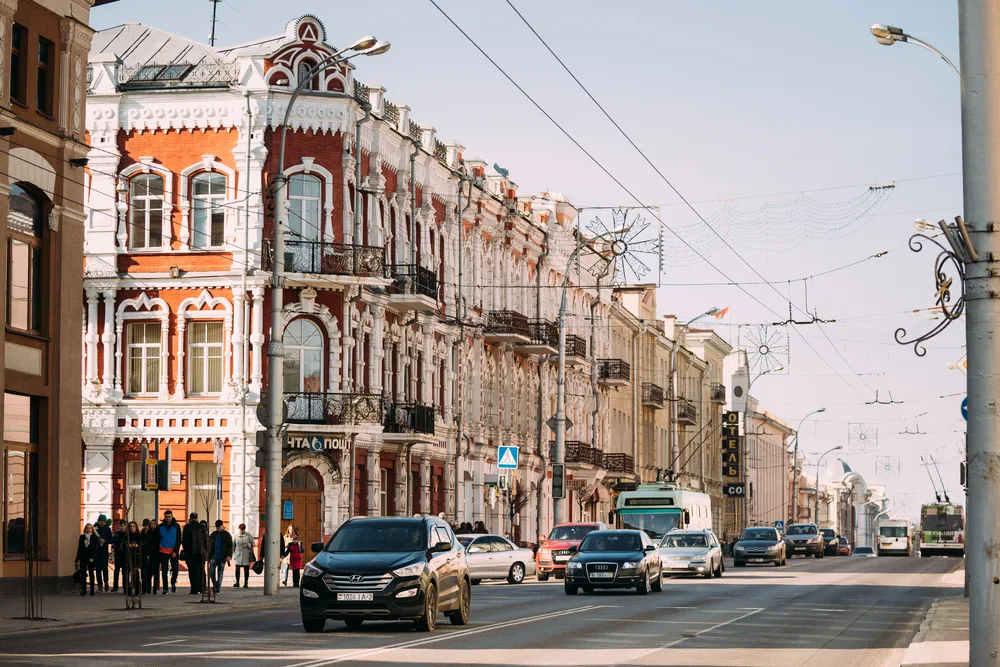
Gomel, Belarus – March 8, 2017: Traffic on Sovetskaya street in spring sunny day/Grisha Bruev/Shutterstock
Also called Homel or Homyel, Gomel offers plenty to enjoy. The greater Gomel Oblast region in the southeast of Belarus is one of the older settlements and includes the ancestral lands of the Dregovichi and Radimichi tribes.
It was also one of the area’s first Jewish communities in the Middle Ages, and remained a popular settlement until World War II.
Gomel is the second-largest city in Belarus, with about 1.3 million residents, including about 1 million in the city boundaries and the remaining on the outskirts.
It’s also the country’s largest industrial area, creating everything from oil to steel to paper pulp. It also has a thriving agricultural industry, including condensed milk, flax, and potatoes.
It has recently became the location of the Radioecological Reserve, a scientific program which is studying radiation from Chernobyl.
The city also has an emphasis on sports and fitness, and includes world-class competition and training areas for ice sports, water sports, equestrian sports, along with a ski hill, and general recreation amenities.
4. Brest
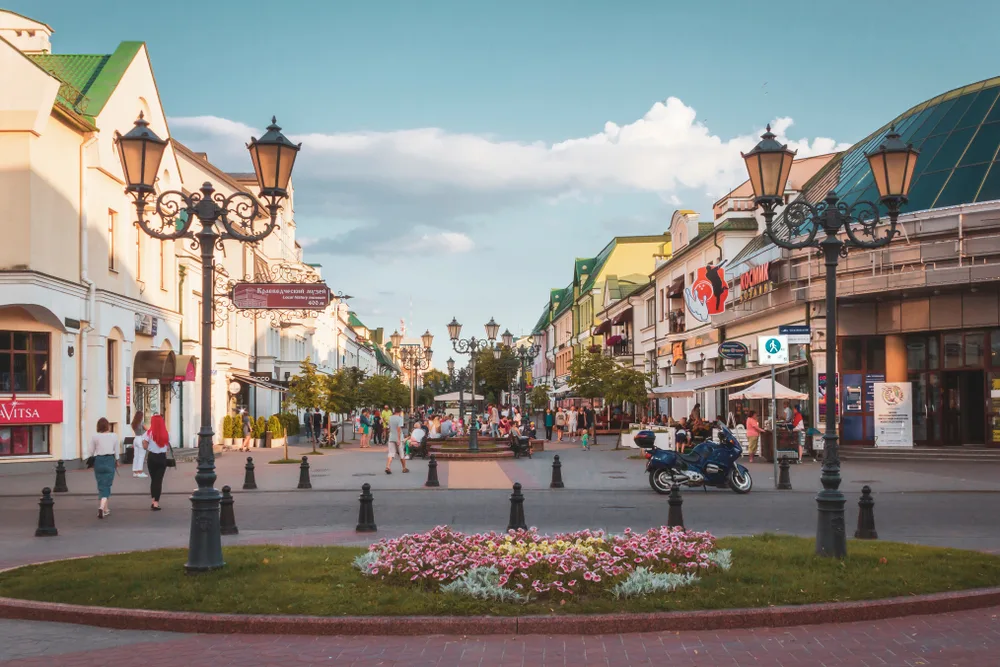
Brest, Belarus. 25 July 2017. Vintage walking street Sovietskaya view/Zakharov Vadim/Shutterstock
Brest is a center of industry and the western gateway to Belarus. While it does have elements of modern cities, it also has an abundance of forest land and wetlands in this region.
It also is one of the country’s prominent food producers. Its history goes back just over 1,000 years – it marked this milestone in 2019.
Two of the more historically significant events of the 20th century took place here: the first in 1918 when Russia and the Central Powers signed a treaty ending Russia’s role in World War I.
The second was in 1991, when the Soviet Union officially dissolved and returned independence to Belarus and a dozen other surrounding republics. These states then joined together to create the Commonwealth of Independent States.
Modern visitors can enjoy urban activities like nightclubs and museums, or head into nature and check out all sorts of local parks and more than a dozen natural reserves. Belovezhskaya Puscha National Park is one of the more prominent ones.
So Where Should You Stay in Belarus?
There’s plenty to love about about this historical country, whether it’s getting out in nature or enjoying a part of the world that hasn’t received a lot of tourists historically.
To recap, the best places to stay in Belarus include:
| 💃 Best Area for Nightlife | Minsk |
| 🛍️ Best Shopping | Grodno |
| 🏰 Best Area for Museums | Gomel |
| 🥾 Best Area for Walking | Brest |
So, with so much to see and do, what are you waiting for — book your trip today to experience all that Belarus has to offer. Happy travels!



